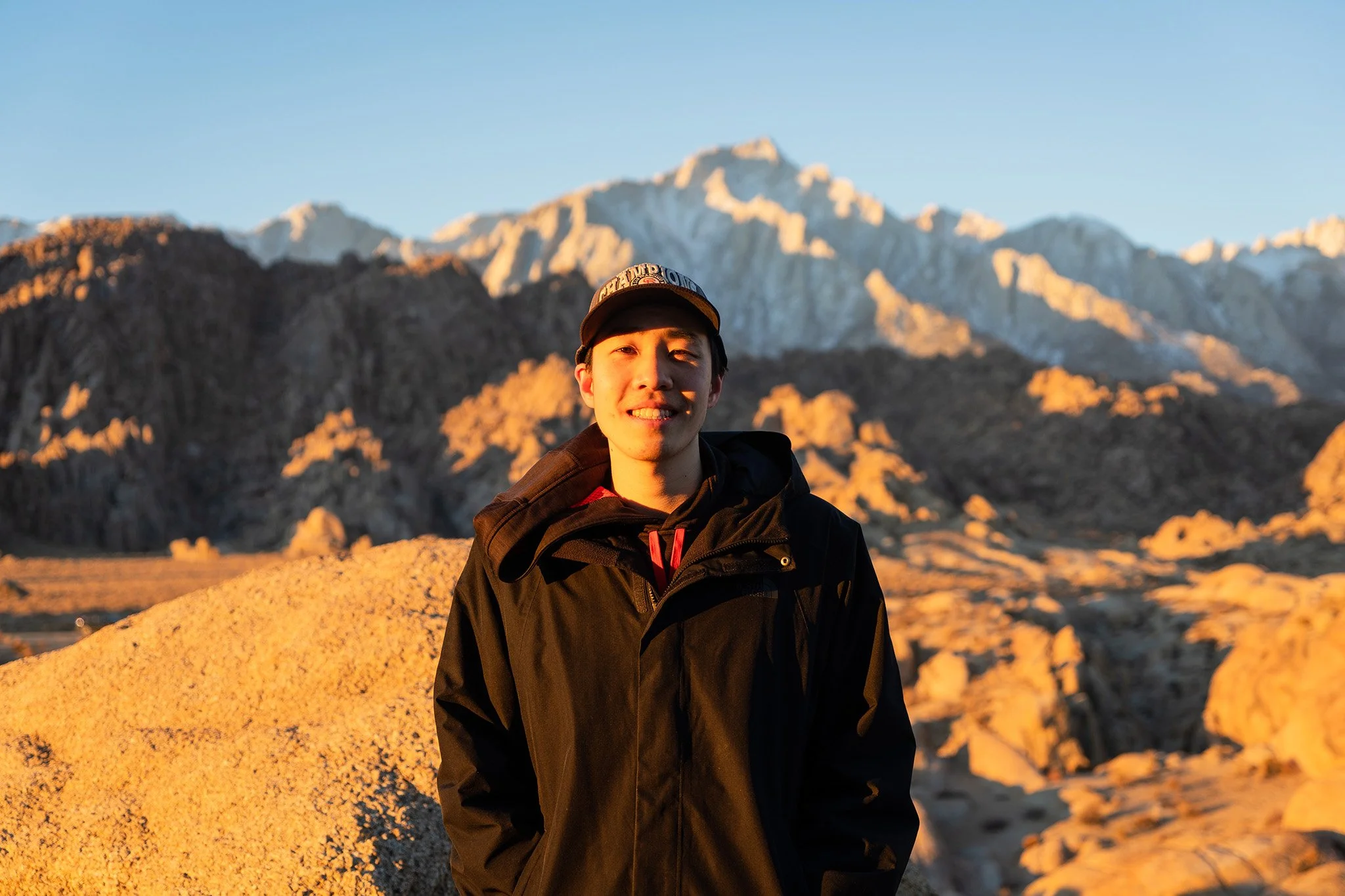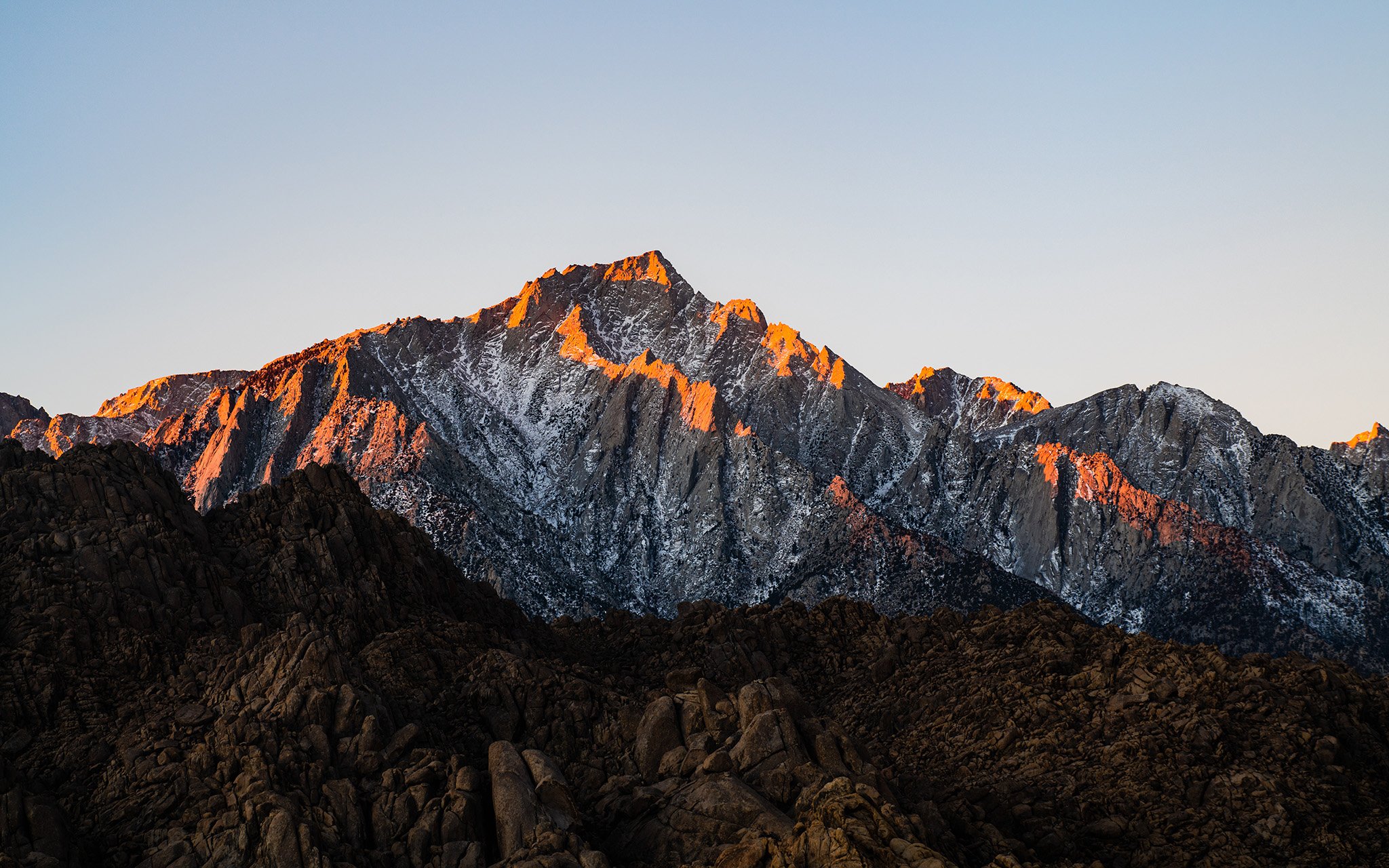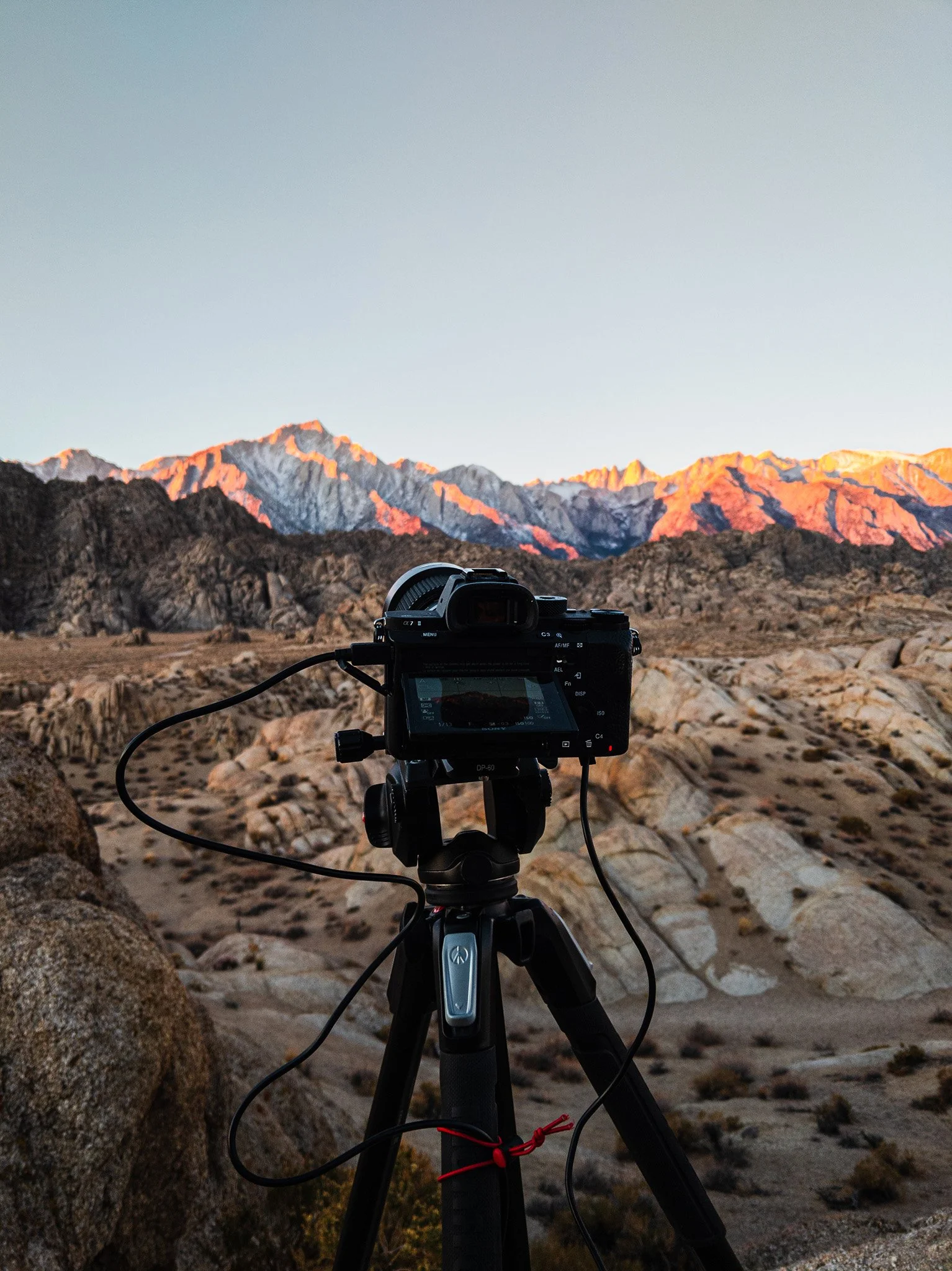Geminid Meteor Shower at Alabama Hills
Alabama Hills Geminid Meteor Shower | Sony Alpha a7R II + 16-35mm f/2.8 GM @ 16mm, f/2.8, ISO 6400, 15 sec x 15
A couple of weeks ago, I visited Alabama Hills and Death Valley National Park with my parents to photograph the Geminid Meteor Shower. Unlike the last time I photographed a meteor shower, I have since learned a much more about how to plan a meteor shower photo with the help of the PhotoPills app. And I was excited to learn that this meteor shower had the potential to be one of the best of the year with a predicted rate of 120 meteors per hour at the peak. Even though the moon phase would be a waxing gibbous on the night of the meteor shower peak, it would set at around 3 am. And once the moon set, the show would be on. With this in mind, my parents booked an awesome location close to the planned point of interest a couple months in advance.
Unfortunately, in the week leading up to our trip, the weather forecast showed heavy storm clouds passing over our planned location on the night of the peak. These are the same clouds that would bring snow to the higher elevation areas including the Sierra Nevada. Additionally, the night before the peak would have partial cloud coverage. This meant that our best night to see the showers was two nights before. Although the show would only cap at around 8 meteors per hour, the moon would set a couple hours earlier than on the night of the peak giving us more time to see more meteors.
The following morning with the Eastern Sierra in the background
After driving all day, we arrived in Alabama Hills around midafternoon. We went on a short hike and explored some cool rocks in the backdrop of the beautiful Eastern Sierra Nevada mountains. Then, we had an early dinner and got some sleep before driving back out to this arch around midnight. While the moon sets below the horizon at 12:50 am, I saw the moon dip below the mountain tops just before midnight. This is something that I originally did not think about; however, it just means that I did not have to worry about the moon light being too bright.
As I stepped out of the car, I was in elated to see so clearly all the stars above. It was only a short walk in the dark to get to the arch, and the conditions were perfect. Once I set up my composition, I first wanted to make sure I had a clean foreground exposure that I could later blend in with the sky. So, I had my dad use a little LED light (Aputure MC) at 3600K on the lowest brightness to add some fill and rim light on the arch. After getting my foreground exposures, I set up my camera in time-lapse mode so that it could take photos automatically throughout the night. Since I planned to leave my camera running non-stop throughout the whole night, I powered my camera with an external power bank.
Alabama Hills Geminid Meteor Shower | Sony Alpha a7 II + 20mm f/1.8 @ f/1.8, ISO 5000, 10 sec x 19
After my camera was all set up, I warmed up in the car for a while before coming back out later in the night to watch the rest of the meteor shower. Since the radiant of the meteor shower had shifted more towards the west as the night went on, I also decided to setup a second camera looking in that direction. It was pretty cold as the temperature was below freezing which made it a little bit of a challenge to setup my camera. And while I stayed warm with gloves and a heavy jacket, my second camera shutdown after about 20 minutes because it was too cold for the battery to operate under. Thankfully, my power bank that was powering my main camera had no problems.
Editing my main photo and its accompanying time-lapse was quite challenging. As I learned last time I photographed the milky way in a light polluted area, stacking the photos allows me to increase the signal to noise ratio and really bring out the vibrancy of colors in the final image. For the sky, I stacked fifteen 15 second exposures for a total exposure time of 3 minutes and 45 seconds. Additionally, rotated and aligned the handful of meteors that I captured to the stars. For the foreground, I blended in the light painted exposures along with a bunch of stacked photos that were taken just under the ambient light.
The Gemini constellation is where the Geminid Meteor Shower originates from, and this is just above the top edge of the photo in the center. Most of the meteors look like they converge to a single point; however, there were a few meteors that I captured that were coming from a different part of the sky. I think that this means that those few meteors were from a different meteor shower. While not shown in this photo, in the time-lapse frames just after the brightest meteor left of center flew through the sky, I captured a persistent train that was left behind. I hope to also share that time-lapse soon, but creating a time-lapse where each photo is stacked for noise reduction takes up a lot of space (and thus, a lot of compute).
Just above the arch and to the right is the Orion constellation. You can see the three stars in a row which is Orion’s Belt. And the bright yellow star above that (in the upper third of the photo) is Betelgeuse. The bright blue star up and to the right of the arch is Rigel which forms the bottom part of the Orion constellation. Also, the bright blue star up and to the left of the arch is Sirius.
Lone Pine Peak Sunrise | Sony Alpha a7R II + 80-200mm f/2.8 @ 100mm, f/11, ISO 100, 1/8 sec
Since it was just after 5 am when I finished taking pictures of the stars, we decided to come back out to catch the sunrise. And while it would have been nice to have some clouds in the background catch some light, the sky was clear (particularly in the east) which allowed the direct sunlight to paint the tops of the mountain peaks. It was a short hike to get to this spot, and we basically ran through the trail to make sure we got there in time. And if this looks familiar, these are the same mountain peaks as the macOS Sierra wallpaper.
Here is a couple behind the scenes photos I also took. The first one is my camera setup during sunrise. And the second one is back at the place we were staying at with my laptop transferring the photos from my camera after getting back in the morning. In the background, you might be able to spot some ping pong paddles – which is something we enjoyed playing during the day. After this eventful night and morning, I was super tired and went to bed. We rested up the rest of the day before getting up early to spend the next day in Death Valley National Park. Thank you for reading about my adventures from Alabama Hills. Also, stay tuned for my next blog post when I share the photos and stories from my time in Death Valley National Park.





